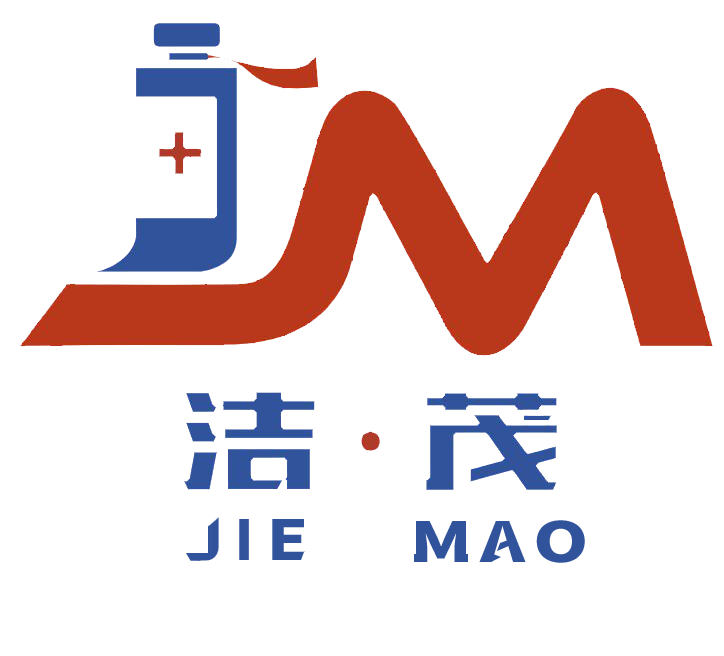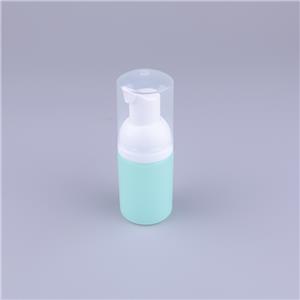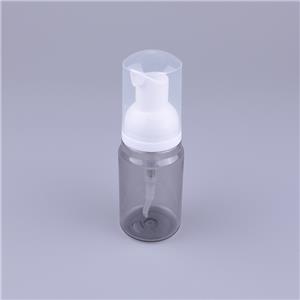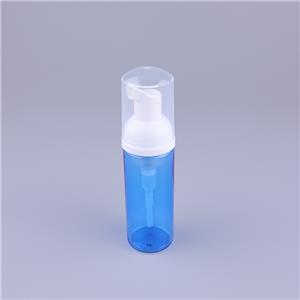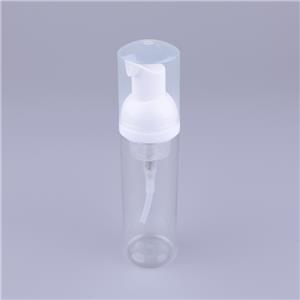- Home
- >
- News
- >
- Public Information
- >
- Roll on bottle
Roll on bottle
Roll on bottle
In the pursuit of convenience and efficiency in modern life, roll on bottles have quietly entered people's daily lives and professional fields with their unique design and practical functions. From the portable perfume roll on bottle to the pharmaceutical roll on bottle used to apply medicine, this seemingly small container has become the ideal packaging form for many liquid products by virtue of the characteristics of precise control of liquid dosage, avoiding pollution, and convenient carrying. Whether it's personal care, healthcare, or industrial applications, roll on bottles have demonstrated strong adaptability and irreplaceable advantages, while also constantly evolving and changing in the wave of environmental protection and innovation.
1、 Structural Design and Working Principles
The roll on bottle is mainly composed of three parts: the bottle body, the bottle cap, and the ball bearing component. Its exquisite structural design is the basis for achieving unique functions.
The bottle body is the main body for storing liquids, usually cylindrical or flattened cylindrical, and is often made of glass, plastic, or metal. The cylindrical bottle body is easy to grip and roll, while the flat cylindrical design is more convenient for carrying and can be easily placed in a pocket or makeup bag. There are various capacity specifications for bottle bodies, including 3ml, 5ml, 10ml, 15ml, etc., which can be selected according to different usage needs and product positioning. The smaller capacity roll on bottle is suitable for products with high portability requirements, such as perfume ball sample; Large capacity ones are suitable for skincare products or medications that are frequently used in daily life.
The bottle cap plays a role in sealing and protecting the ball components in the roll on bottle, while also making it convenient for users to open and close. The material of the bottle cap matches the bottle body, and common ones include plastic screw caps, metal screw caps, etc. The screw cap design can ensure good sealing and prevent liquid leakage. Especially for liquid products with strong volatility, such as essential oil and perfume, effective sealing can reduce the volatile loss of liquid and extend the service life of the product.
The ball bearing component is the core part of the ball bearing bottle, which directly determines the application method and user experience of the liquid. It is mainly composed of ball bearings, ball seats, and conduits. Ball bearings are usually made of stainless steel, glass, or ceramic materials, with a smooth and rounded surface that can roll flexibly in the ball seat. Stainless steel ball bearings have good corrosion resistance and wear resistance, and are suitable for various liquid products; Glass ball bearings and ceramic ball bearings have a delicate texture, high chemical stability, and will not undergo chemical reactions with liquids. They are particularly suitable for containing sensitive liquids such as essential oils and medicinal preparations. The ball seat is fixed at the bottle mouth, providing a rolling track for the ball and connected to the liquid inside the bottle through a conduit. When the roll on bottle tilts or rolls, the liquid inside the bottle rises through the conduit under the action of gravity to the contact area between the ball and the ball seat. As the ball rolls, the liquid is evenly applied to the target surface. This unique working principle enables the roll on bottle to achieve precise control of liquid usage, avoid waste, and reduce the contact between liquid and external air, thereby reducing the risk of pollution.
2、 Material characteristics and performance advantages
The material selection of roll on bottles is diverse, and different materials endow roll on bottles with different performance characteristics to meet the packaging needs of various products.
Glass material is one of the commonly used materials for roll on bottles, which has the advantages of high transparency, strong chemical stability, and is not easily reactive with liquids. The glass can clearly display the color and margin of the liquid in the bottle, improve the visual appeal of the product, and is especially suitable for packaging products with high appearance requirements such as perfume and essential oil. At the same time, the sealing performance of glass material is good, which can effectively block the penetration of substances such as oxygen and moisture, maintain the quality stability of liquid products, and extend the shelf life. In addition, glass roll on bottles can be personalized decorated through processes such as screen printing, hot stamping, and labeling to create a unique appearance style and meet brand differentiation needs. However, glass materials also have the disadvantages of being heavy and fragile, and need to be handled with care during transportation and use.
Plastic roll on bottles are widely used due to their advantages of light weight, durability, and low cost. Common plastic materials include polyethylene (PE), polypropylene (PP), polyethylene terephthalate (PET), etc. PE material roll on bottles have good flexibility, impact resistance, non-toxic and odorless properties, and are suitable for storing various skincare products and medicines; PP material has high heat resistance and hardness, and can maintain stability in high temperature environments. It is commonly used in pharmaceutical roll on bottles that require high-temperature disinfection treatment; PET material has high transparency and light weight, and is commonly used for packaging cosmetic rolling bottles. Plastic roll on bottles can also be made into various complex shapes and structures through injection molding technology to meet the personalized design needs of different products. However, the barrier performance of plastic materials is relatively weak, and for some volatile liquid products that require extremely high sealing performance, special sealing designs may be needed.
Metal roll on bottles have the characteristics of high-quality texture, durability, and sturdiness. Common types include aluminum and stainless steel roll on bottles. Aluminum roll on bottles are lightweight and easy to process into shapes. The surface can be anodized to form various colors and textures, enhancing the beauty and texture of the product; Stainless steel roll on bottles have stronger corrosion resistance and strength, making them suitable for industrial applications or special purpose products with high durability requirements. Metal roll on bottles have good sealing properties and can effectively protect the liquid inside the bottle, but their relatively high cost and weight limit their application in certain scenarios where high portability is required.
3、 Production process and quality control
The production process of roll on bottles varies depending on the material and structure, mainly including three stages: bottle body manufacturing, ball component production, and assembly.
For glass bottles, blowing or pressing processes are usually used. The blowing process is to blow molten glass into a mold through a blowing tube, forming a hollow bottle shape. This process can produce glass roll on bottles with various shapes and larger sizes; The pressing process involves placing glass raw materials into molds and shaping them through pressure, suitable for producing bottles with regular shapes and high dimensional accuracy requirements. After the glass bottle body is manufactured, it still needs to undergo post-processing processes such as cutting, polishing, and polishing to ensure that the bottle mouth is smooth and easy to install ball components.
The production of plastic bottle bodies mainly adopts injection molding technology. After heating and melting the plastic particles, they are injected into the mold cavity through an injection molding machine, cooled and solidified to obtain the desired shape of the bottle body. Injection molding can achieve automated production, high production efficiency, stable product quality, and can produce various complex shapes and structures according to design requirements. During the injection molding process, it is necessary to strictly control process parameters such as temperature, pressure, and injection speed to ensure the dimensional accuracy, appearance quality, and physical properties of the bottle body.
The production of ball components involves precision machining technology. Ball bearings are usually manufactured using processes such as grinding and polishing to ensure that their surface smoothness and roundness meet high standard requirements; Ball bearings and conduits are generally made through injection molding or metal processing techniques, requiring precise dimensions and a tight fit with the balls to ensure smooth liquid transmission.
In the assembly process of the ball bearing bottle, it is necessary to accurately install the ball bearing components onto the bottle body and tighten the bottle cap. During the assembly process, attention should be paid to cleanliness and hygiene to avoid impurities entering the bottle and contaminating the liquid. At the same time, strict sealing testing should be conducted by placing the roll on bottle in a certain pressure environment or conducting an inverted test to check for any liquid leakage. In addition, it is necessary to test the rolling performance of the ball bearings to ensure that they can roll flexibly and the liquid is evenly applied. Only roll on bottles that have passed various quality inspections can enter the market for sale to ensure consumer experience and product quality and safety.
4、 Diverse application scenarios
Ball bearing bottles have been widely used in multiple fields due to their unique design and functional advantages.
In the field of personal care and beauty, roll on bottles are popular packaging forms for perfume, essential oil, eye cream, essence and other products. The perfume roll on bottle is small and portable, so users can replenish the fragrance at any time, and the application method is accurate, so as to avoid uneven or wasteful spraying of perfume; The essential oil rolling bottle facilitates users to apply essential oils to specific acupoints or skin areas for massage care, while reducing the contact between essential oils and air and maintaining their active ingredients; Eye cream and essence liquid are packed in roll on bottles. Through rolling massage of ball, it can promote product absorption, improve skin care effect, avoid direct contact with the product by fingers, and reduce the risk of pollution.
In the field of healthcare, roller bottles are commonly used for packaging external application of medicines, such as anti itch ointments, analgesic drugs, cooling oils, etc. The precise application method of the roll on bottle can accurately apply the medicine to the affected area, improve the treatment effect, and reduce the waste of medicine. For some topical medications that require frequent use, the portability and hygiene of the roll on bottle also bring great convenience to patients.
In the industrial field, roll on bottles also have their place. For example, in the electronics manufacturing industry, roll on bottles can be used to hold liquids such as soldering flux and cleaning agents. The liquid is precisely applied to the surface of electronic components through the rolling of the ball, achieving local cleaning or soldering treatment; In the maintenance of precision instruments, roll on bottles can be used to apply lubricating oil, lubricate and maintain key parts of the instrument, and ensure the normal operation of the instrument.
In addition, in the fields of DIY handmade crafts, aromatherapy, etc., rolling roll on bottles are also favored by enthusiasts. People can put different perfumes, essential oils and other liquids into roller bottles according to their own preferences to make personalized perfume or aromatherapy products and enjoy the fun of doing things.
5、 Sustainable Development and Future Trends
With the deepening of environmental protection concepts, the roll on bottle industry is also actively exploring the path of sustainable development.
In terms of materials, the application of recyclable and biodegradable materials is gradually increasing. Glass material has good recyclability, and new glass products can be made through recycling processing; Some new types of biodegradable plastics have also been applied in the production of roll on bottles, which can be decomposed by microorganisms in the natural environment, reducing environmental pollution. At the same time, companies are also striving to optimize packaging design, reduce material usage, adopt minimalist and lightweight designs, and lower resource consumption.
In product design, refillable roll on bottles are receiving increasing attention. After purchasing the first product, consumers only need to purchase a supplementary package to reuse the roll on bottle, reducing the waste of disposable packaging. In addition, some brands have also launched customized services, where consumers can choose different capacities, materials, and appearances of roll on bottles according to their needs, achieving personalized consumption and improving product utilization.
In the future, the development of roll on bottles will be combined with technology and move towards intelligence. For example, embedding micro sensors in a roll on bottle to monitor the remaining amount of liquid in real-time, and reminding users to replenish it in a timely manner through a mobile app; Or develop roll on bottles with temperature control function, which can automatically adjust the temperature according to the characteristics and usage scenarios of the liquid, improving the product's effectiveness and safety. Meanwhile, with the continuous maturity of 3D printing technology, personalized customization of roll on bottles will become more convenient and efficient, meeting the increasingly diverse needs of consumers.
Roll on bottles occupy an important position in the packaging field due to their unique structural design, diverse material selection, wide application scenarios, and constantly innovative development trends. From daily life to professional fields, roll on bottles are bringing convenience and innovation to people's lives and production. Driven by environmental protection and technology, roll on bottles will continue to evolve and provide users with a higher quality, environmentally friendly, and intelligent user experience.
